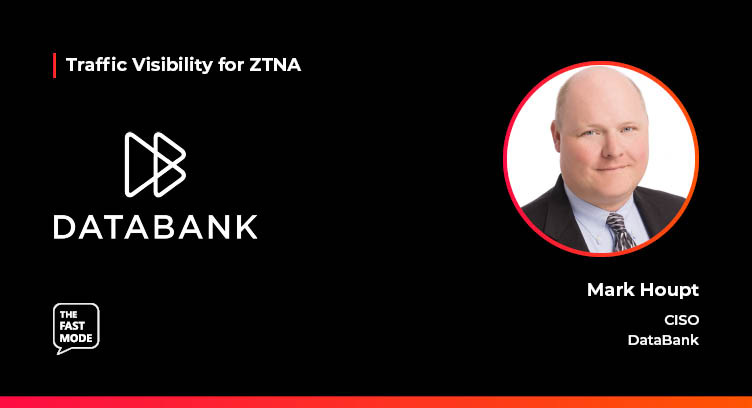The Fast Mode spoke to Mark Houpt, CISO of DataBank on the impact of traffic visibility on ZTNA networks. Mark joins us in a series of discussions with leading cybersecurity and networking vendors, assessing the evolution of ZTNA technologies, the roadmap for ZTNA deployments, the benefits of ZTNA for enterprise and telco networks, and the need for real-time traffic visibility technologies such as DPI for ZTNA.
Ariana: What do you consider the core features (must-haves) of ZTNA?
Mark: ZTNA operates on a no-trust, identity-centric security process in which users must be verified to receive access even within an organization’s internal network. We used to call this “least privilege.” ZTNA’s "never trust, always verify" approach enables a security model where every access request is treated as if it's originating from an untrusted network, regardless of where it comes from. Users must be authenticated before being granted access and should be permitted only to gain access to the specific resources they need and are authorized for, nothing more. Micro-segmentation, which divides the network into smaller segments and controls communication between the segments, is a core feature of ZTNA, as it helps limit the impact of potential incidents or breaches and ensures ongoing monitoring of user access and activity. Other features fortifying ZTNA include end-to-end encryption, which is where data is encrypted not just when it's stored but also when it is being transmitted, and application-centric security, which requires applications to authenticate themselves before they can access other resources.
Ariana: What challenges do you see across ZTNA deployments?
Mark: The biggest challenge in implementing ZTNA is meeting the business needs without being overbearing, and creating micro-segmentation, as well as defining the assets, users, and resources to ensure a secure network. Organizations need to understand that business and have a comprehensive understanding of their application landscape, identifying and classifying all parts within the network, to effectively enforce ZTNA policies. Having partial ZTNA deployment and loose or conflicting policies from a lack of business understanding and poorly defined applications can lessen the effectiveness of the security system. Implementing robust logging and monitoring tools can help with visibility into the network and regularly assessing the security processing and updating them as necessary is crucial for maintaining an effective security posture.
Mark serves as DataBank’s Chief Information Security Officer and is responsible for developing and maintaining the company’s security program road map and data center compliance programs. He brings over 30 years of extensive information security and information technology experience in a wide range of industries and institutions. Mr. Houpt holds an MS-ISA (Masters Information Security and Assurance), numerous security and technical certifications (CISSP, CEH, CHFI, Security +, Network+) and qualified for DoD IAT Level III, IAM Level III, IASAE Level II, CND Analyst, CND Infrastructure Support, CND Incident Responder, and CND Auditor positions and responsibilities.
This interview is a part of The Fast Mode's Next-Gen DPI Traffic Visibility for ZTNA segment, featuring over 40 leading cybersecurity and networking solution providers and their views on the importance of traffic visibility for ZTNA. A research report on this topic will be published in January 2024 - for more information, visit here.


















